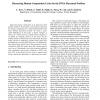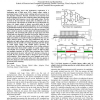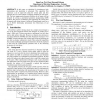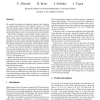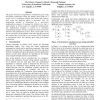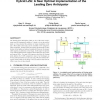122
click to vote
ERSA
2009
14 years 10 months ago
2009
Harnessing human computation is an approach to find problem solutions. In this paper, we investigate harnessing this human computation for a Field Programmable Gate Array (FPGA) p...
TSMC
2002
15 years 17 days ago
2002
Abstract--The notion of the necessary criticality (both with respect to path and to activity) of a network with imprecisely defined (by means of intervals or fuzzy intervals) activ...
117
click to vote
ASPDAC
2008
ACM
15 years 3 months ago
2008
ACM
Meeting power and performance requirement is a challenging task in high speed ALUs. Supply voltage scaling is promising because it reduces both switching and active power but it al...
119
click to vote
ICC
2007
IEEE
15 years 4 months ago
2007
IEEE
This paper reports on a promising approach for solving problems found when Multi Protocol Label Switching (MPLS), soon to be a dominant protocol, is used in core network systems. D...
ICCAD
1999
IEEE
15 years 5 months ago
1999
IEEE
: In this paper, an algorithm for simultaneous logic restructuring and placement is presented. This algorithm first constructs a set of super-cells along the critical paths and the...
124
click to vote
ICCAD
1999
IEEE
15 years 5 months ago
1999
IEEE
We consider the problem of finding an optimal clock schedule, i.e. optimal arrival times for clock signals at latches of a VLSI chip. We describe a general model which includes al...
100
click to vote
ICCAD
2000
IEEE
15 years 5 months ago
2000
IEEE
This paper describes an algorithm for simultaneous gate sizing and fanout optimization along the timing-critical paths in a circuit. First, a continuous-variable delay model that ...
108
click to vote
DATE
2010
IEEE
15 years 6 months ago
2010
IEEE
When testing delay faults on critical paths, conventional structural test patterns may be applied in functionally-unreachable states, leading to over-testing or under-testing of t...
ASPDAC
2009
ACM
15 years 7 months ago
2009
ACM
The Leading Zero Anticipator (LZA) is one of the main components used in floating point addition. It tends to be on the critical path, so it has attracted the attention of many r...
114
Voted
DAC
2008
ACM
16 years 1 months ago
2008
ACM
A fundamental problem in timing-driven physical synthesis is the reduction of critical paths in a design. In this work, we propose a powerful new technique that moves (and can als...
